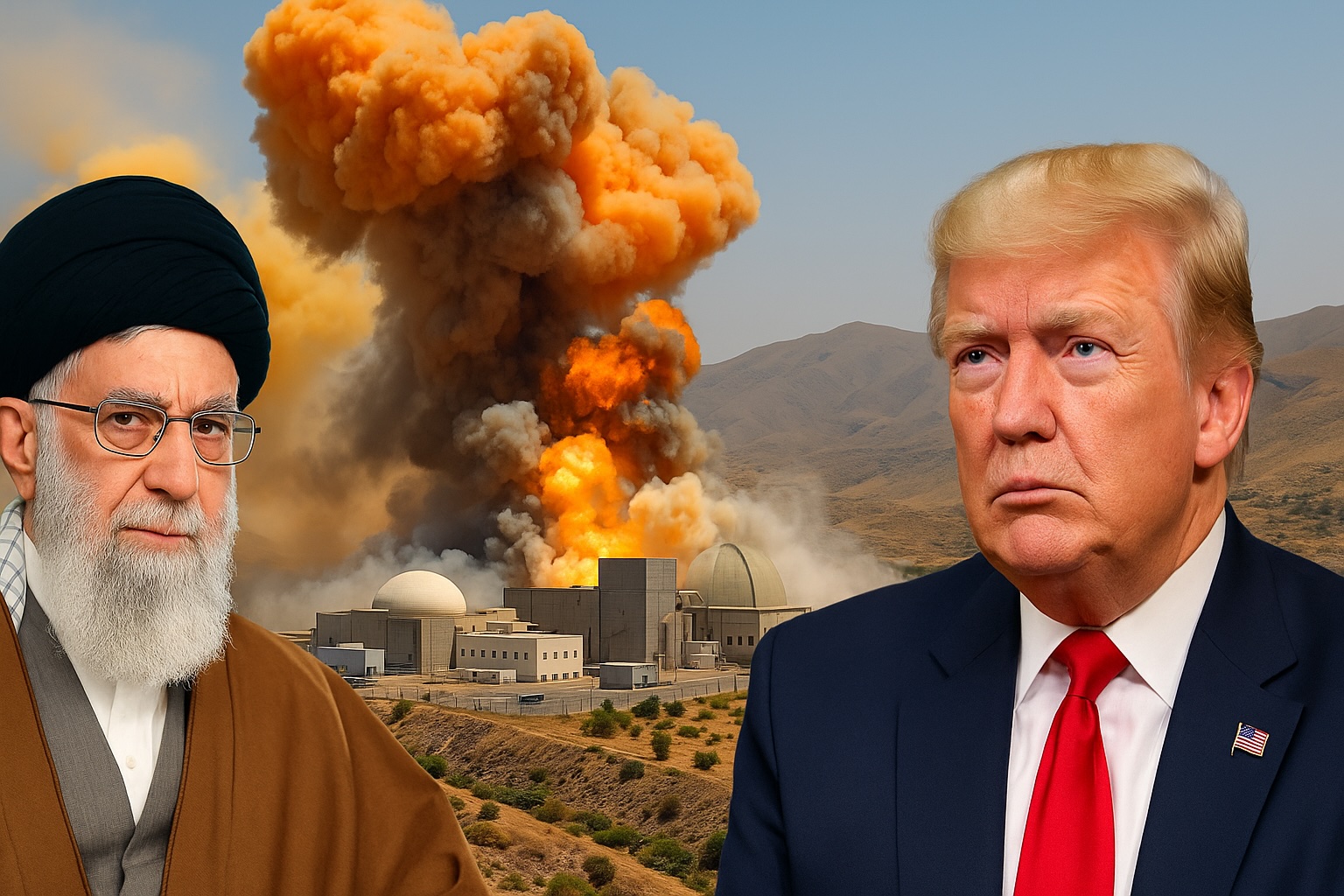Breaking: America’s Bunker-Buster Bombs Shatter Iran’s Most Hidden Nuclear Facility!

In a significant and unprecedented move, the United States has conducted airstrikes against three of Iran’s key nuclear sites, marking a dramatic escalation in the ongoing conflict between Iran and Israel. The targeted facilities included the heavily fortified Fordo uranium enrichment plant near Qom, as well as the nuclear complexes at Natanz and Esfahan.
These strikes were carried out using the US Air Force’s B-2 Spirit stealth bombers, deployed to the Pacific island of Guam, the only aircraft capable of delivering the Massive Ordnance Penetrator (GBU-57), a bunker-busting bomb designed to penetrate deeply buried and fortified targets. Experts suggest that multiple such weapons were dropped in coordinated succession to ensure the destruction of Iran’s underground nuclear infrastructure.
President Donald Trump described the operation as a “historic moment for the United States, Israel, and the world,” urging Iran to cease its military aggression. His unexpected return to Washington and swift move to the White House Situation Room signaled the gravity of the situation. Despite earlier ambiguity about American involvement, the precision and scale of the strikes revealed a deliberate and carefully calibrated shift in US foreign policy, one carried out with an air of unpredictability characteristic of the current administration.
The Fordo facility, nestled within mountainous terrain some 60 miles south of Tehran, is one of Iran’s most secretive and heavily shielded nuclear sites. Its destruction represents a significant setback to Tehran’s nuclear program. Israeli military actions had already targeted Fordo and other nuclear sites in recent days, but lacked the heavy ordnance necessary to reach its depths, prompting appeals for US military support.
The fallout from the strikes has intensified an already volatile situation. Iran’s leadership has warned that any deeper involvement by the United States in the conflict would be “very, very dangerous,” while Iranian missile and drone attacks on Israeli cities have continued unabated. Both nations report rising casualties, with hundreds of deaths and thousands wounded on each side, as civilians bear the brunt of the expanding violence.
In Israel, the military reported the assassination of three senior Iranian commanders, including Saeed Izadi, a key figure in orchestrating recent attacks on Israeli territory. Israeli air raids also targeted weapons depots and military infrastructure across southern and central Iran, with satellite imagery confirming damage to nuclear facilities without radiological leaks.
Amid the escalating violence, the international community has repeatedly called for de-escalation and a return to diplomatic negotiations. However, with neither side showing signs of relenting, the prospect of a prolonged and devastating conflict looms large. The specter of regional destabilization, civilian suffering, and a broader confrontation involving external powers weighs heavily on the global stage.
As missiles and drones continue to darken skies from Tehran to Tel Aviv, and as families on both sides seek shelter from the unrelenting attacks, the world watches in anxious anticipation. The future remains uncertain, but the unfolding events underscore the fragile balance between war and diplomacy in one of the most turbulent regions on earth.




![From Kathmandu to the World: How Excel Students Are Winning Big [Admission Open]](https://nepalaaja.com/img/70194/medium/excel-college-info-eng-nep-2342.jpg)
